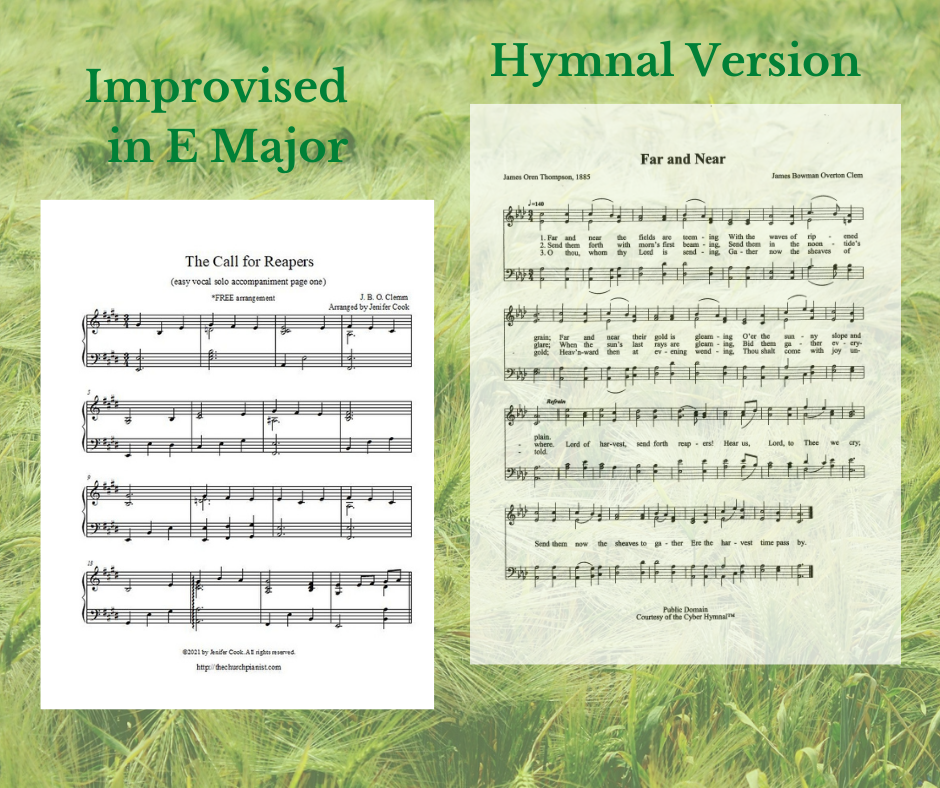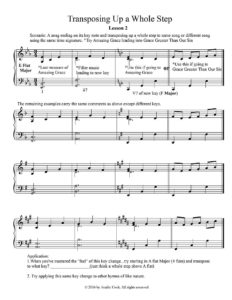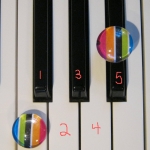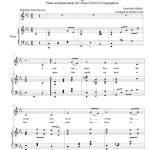Part One: The Call for Reapers: Free Arrangement! Awkward Key for Me!
Monday, March 1st, 2021
Part One: The Call for Reapers
This past Sunday I had to play in E Major (four sharps) for a male vocal solo and survived! He was singing “The Call for Reapers” out of the hymnal. The hymnal version was in the key of A flat major.
In his first practice I discovered E Major was the most suitable key for his baritone range. I decided I would brave the sea of black notes and make it work!
Usually I would have had the vocalist go to another nearby key that I could reasonable transpose to.
As I’ve mentioned before….E major is NOT my most comfortable key to play in. Some of my readers are sharp key lovers but I’m quite the opposite!
A simple sketch of “The Call for Reapers” was all I needed to keep me on track. It worked wonders! I was able to follow the piece fairly easy. The gentleman sang two verses and choruses but I just wrote out one verse and chorus as more of a guide.
Most hymns in the church hymnal don’t go beyond three sharps or five flats. That explains why I don’t feel as comfy beyond the hymnal key range.
Maybe there are other church pianists who could benefit from this simple sketched out arrangement of “The Call for Reapers”.
This particular hymn makes a great choice for Mission’s Conference or other mission related meeting.
I’m sharing the verse in this post and will publish the chorus by hopefully next weekend.
Click on following title to download your FREE copy of the verse
Part Two (chorus) by next weekend. (March 8 – 10, 2021)
The Call for Reapers








